Observing Space : Telescopes – Solutions
1. Fill in the blanks with the proper words.
a. The wavelength of visible light is between 400 nm and 800 nm.
b. GMRT is used for radio waves.
c. A certain X-ray telescope is named after scientist Subramanian Chandrashekhar.
d. The first scientist to use a telescope for space observations was Galileo Galilei.
e. The biggest optical telescope in India is situated at Aryabhatt Research Institute of Experimental Sciences, Nainital.
b. GMRT is used for radio waves.
c. A certain X-ray telescope is named after scientist Subramanian Chandrashekhar.
d. The first scientist to use a telescope for space observations was Galileo Galilei.
e. The biggest optical telescope in India is situated at Aryabhatt Research Institute of Experimental Sciences, Nainital.
2. Form pairs
| Column ‘A’ | Column ‘B’ |
| (1) X-rays | (a) GMRT |
| (2) Optical telescope | (b) ISRO |
| (3) Indian radio telescope | (c) Hubble |
| (4) Launching artificial-satellite | (d) Chandra |
Answer:
(1 – d),
(2 – c),
(3 – a),
(4 – b),
3. What are the difficulties in using ground-based optical telescopes? How are they overcome?
Answer:
Difficulties:
- The intensity of visible light coming from a heavenly body decreases due to absorption as it passes through the Earth’s atmosphere.
- Due to changes in atmospheric temperature and pressure light rays change their path.
- Because of sunlight, we cannot use optical telescopes during the day.
- During the night, city lights and cloudy weather cause difficulties.
Solution:
- To reduce these problems, optical telescopes are situated on top of mountains, in uninhabited places.
- To get rid of all the above problems completely, the telescope is placed above the earth’s atmosphere, in space.
4. Which type of telescopes can be made using a concave mirror, convex mirror, plane mirror, and a lens? Draw diagrams of these telescopes.
Answer:
- A Newtonian telescope can be made using a concave mirror, plane mirror and a lens.
- A Cassegrain telescope can be made using a convex mirror, concave mirror and a lens.
- A refracting telescope can be made using two or more lenses.
5. Study the figure and answer the following questions:
a. What type of telescope is shown in the figure?
b. Label the main parts of the telescope.
c. Which type of mirror does the telescope use?
d. What other type of telescope uses a curved mirror?
e. Explain the working of the above telescope.
Answer:
(a) The Newtonian telescope (Reflecting telescope)
(b)
(c) Concave mirror
(d) The Cassegrain telescope
(e) Working.
- Light rays coming from space are reflected by the concave mirror.
- Before these reflected rays converge at the focus, they are deflected again by a small plane mirror.
- As a result, they get focused at a point lying on the perpendicular to the axis of the telescope’s cylinder.
- They pass through the eyepiece and we get a magnified image of the source.
6. Answer the following questions.
a. Explain the construction of Galileo’s telescope.
Answer:
- The Galileo’s telescope is made up of two or more convex lenses.
- The lens facing the object is called the objective lens which is made as large as possible to collect the maximum amount of light coming from a heavenly object.
- The lens closer to the eye is called the eyepiece which uses the light collected by the objective lens and produces a large image of the source.
- Such a telescope is also called a refracting telescope.
b. Explain the construction of a radio telescope.
Answer:
- The radio telescope is made from one or more dishes of a particular parabolic shape.
- As in optical telescope, the incident radio waves are reflected by these dishes and converge at the focus.
- A radio receiver is placed at the focal point.
- The information gathered by this receiver is passed on to a computer which analyses it and constructs an image of the source.
c. Why are optical telescopes located in uninhabited places on mountains?
Answer:
- The visible light coming from a heavenly body has to pass through the earth’s atmosphere to reach the earth’s surface.
- During this journey, some of the light is absorbed by the atmosphere and the intensity of the light reaching the earth’s surface decreases.
- A second problem is caused by the changes in atmospheric pressure and temperature.
- These changes cause turbulence in the atmosphere which in turn cause the light rays to change their path slightly and thereby shake the position of the image.
- We cannot use optical telescope during the day. because of sunlight also.
- During the night too, city lights and cloudy weather can cause difficulties in observing the heavenly bodies.
- Hence, optical telescopes are located in uninhabited places on mountains.
d. Why can an X-ray telescope not be based on the earth?
Answer:
- X-rays are emitted from distant heavenly bodies.
- The rays coming towards the earth will be absorbed by the earth’s atmosphere and will go undetected.
- Hence, X-ray telescopes are placed in an orbit outside the earth’s atmosphere and not on the earth.

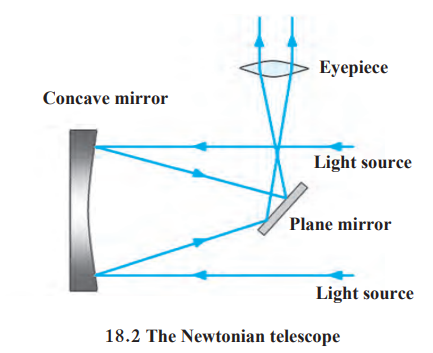
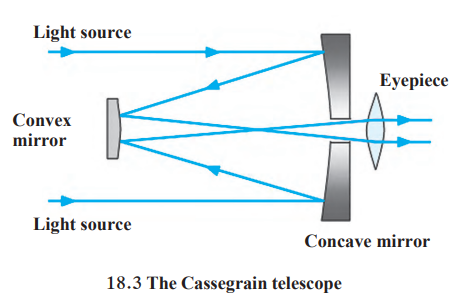
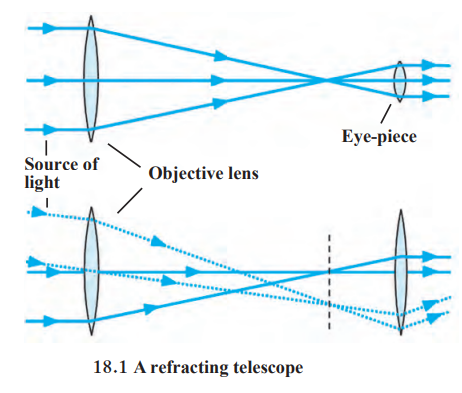
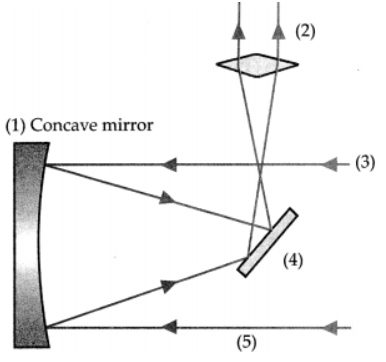
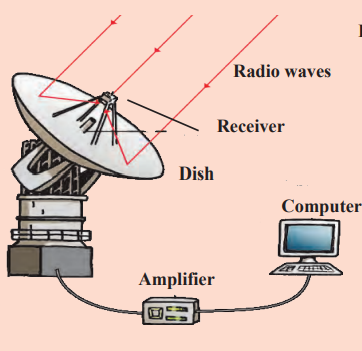
Leave a Reply